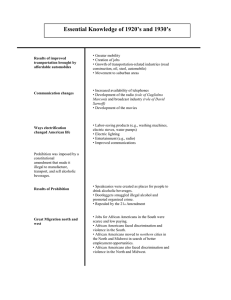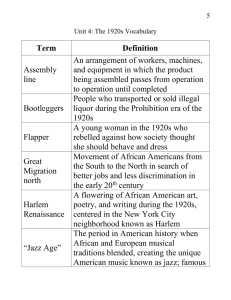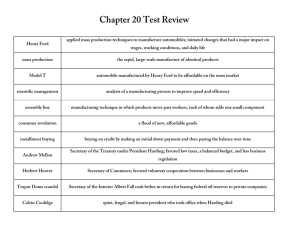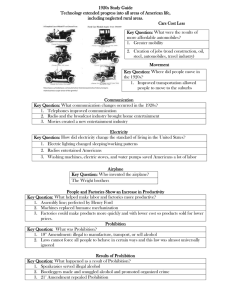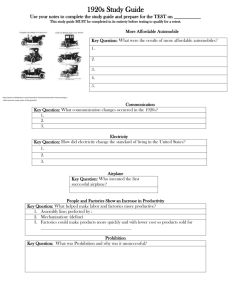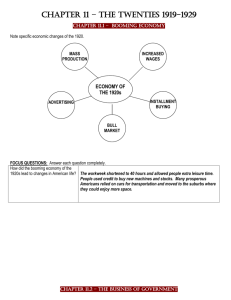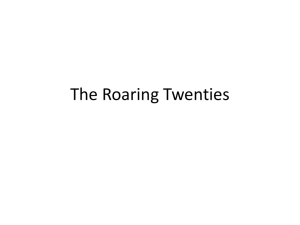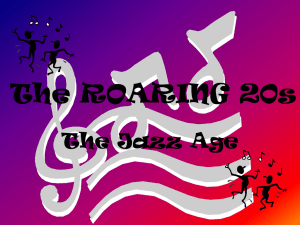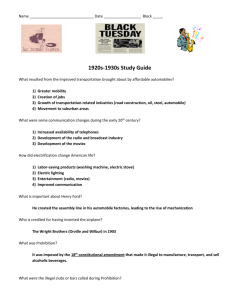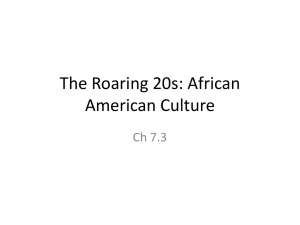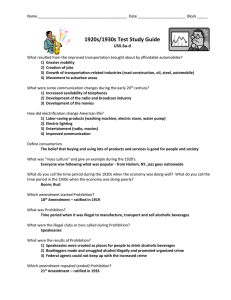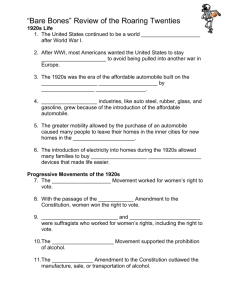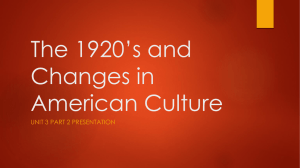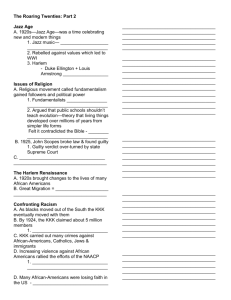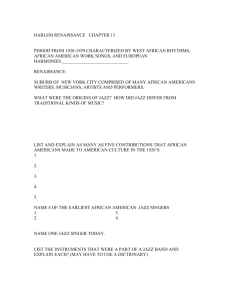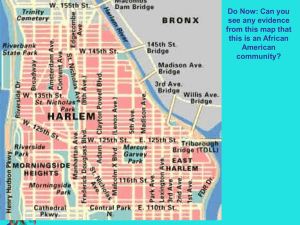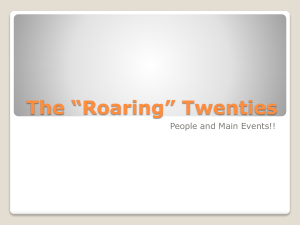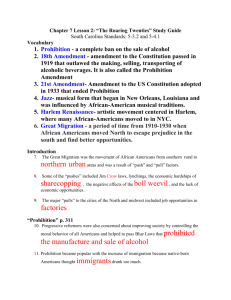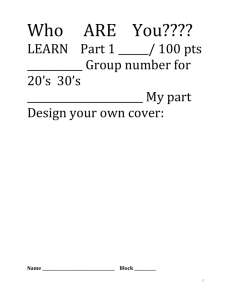File
advertisement
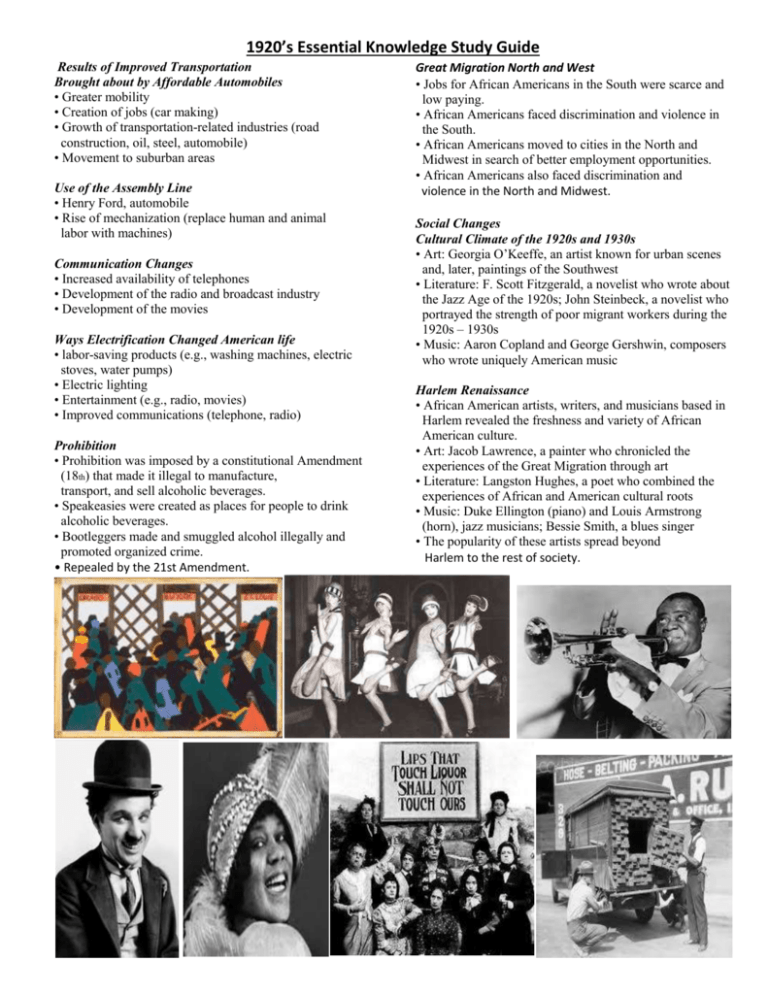
1920’s Essential Knowledge Study Guide Results of Improved Transportation Brought about by Affordable Automobiles • Greater mobility • Creation of jobs (car making) • Growth of transportation-related industries (road construction, oil, steel, automobile) • Movement to suburban areas Use of the Assembly Line • Henry Ford, automobile • Rise of mechanization (replace human and animal labor with machines) Communication Changes • Increased availability of telephones • Development of the radio and broadcast industry • Development of the movies Ways Electrification Changed American life • labor-saving products (e.g., washing machines, electric stoves, water pumps) • Electric lighting • Entertainment (e.g., radio, movies) • Improved communications (telephone, radio) Prohibition • Prohibition was imposed by a constitutional Amendment (18th) that made it illegal to manufacture, transport, and sell alcoholic beverages. • Speakeasies were created as places for people to drink alcoholic beverages. • Bootleggers made and smuggled alcohol illegally and promoted organized crime. • Repealed by the 21st Amendment. Great Migration North and West • Jobs for African Americans in the South were scarce and low paying. • African Americans faced discrimination and violence in the South. • African Americans moved to cities in the North and Midwest in search of better employment opportunities. • African Americans also faced discrimination and violence in the North and Midwest. Social Changes Cultural Climate of the 1920s and 1930s • Art: Georgia O’Keeffe, an artist known for urban scenes and, later, paintings of the Southwest • Literature: F. Scott Fitzgerald, a novelist who wrote about the Jazz Age of the 1920s; John Steinbeck, a novelist who portrayed the strength of poor migrant workers during the 1920s – 1930s • Music: Aaron Copland and George Gershwin, composers who wrote uniquely American music Harlem Renaissance • African American artists, writers, and musicians based in Harlem revealed the freshness and variety of African American culture. • Art: Jacob Lawrence, a painter who chronicled the experiences of the Great Migration through art • Literature: Langston Hughes, a poet who combined the experiences of African and American cultural roots • Music: Duke Ellington (piano) and Louis Armstrong (horn), jazz musicians; Bessie Smith, a blues singer • The popularity of these artists spread beyond Harlem to the rest of society.
